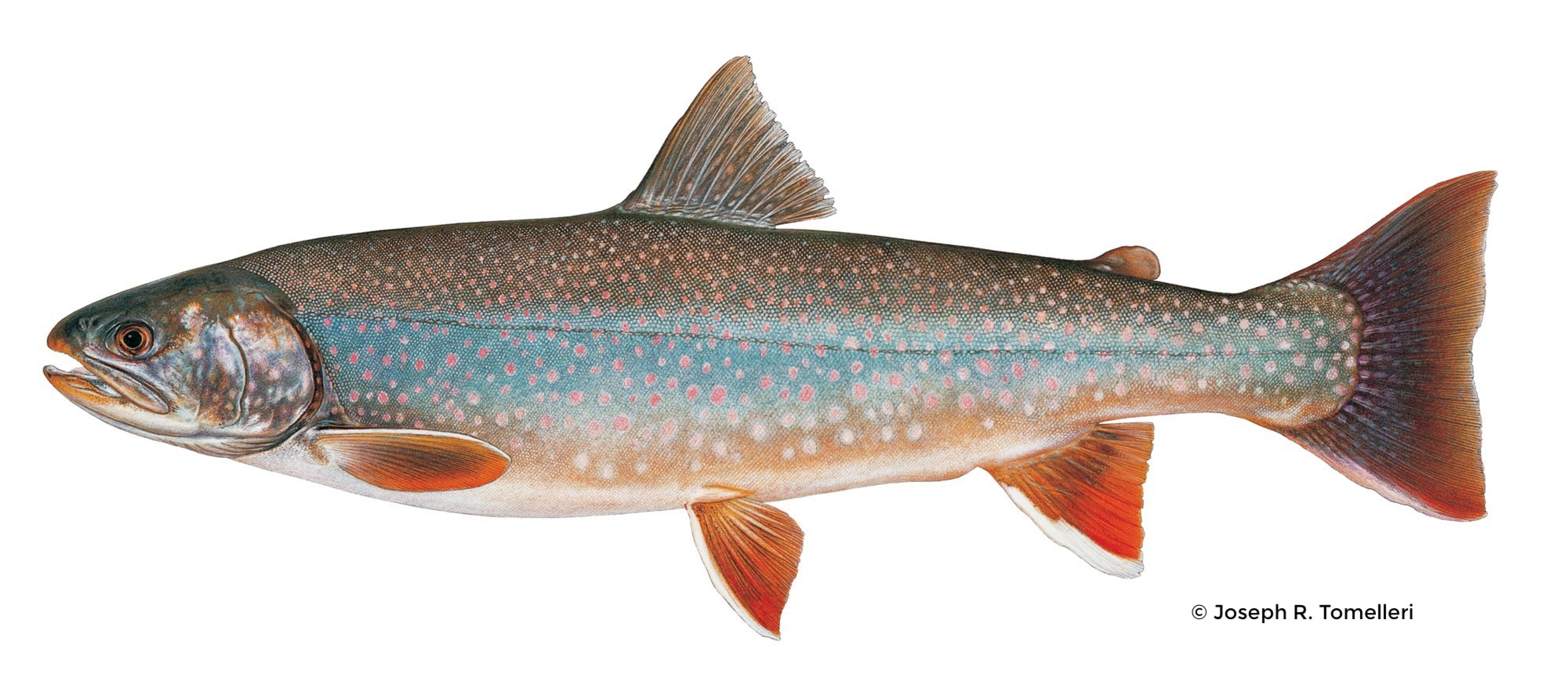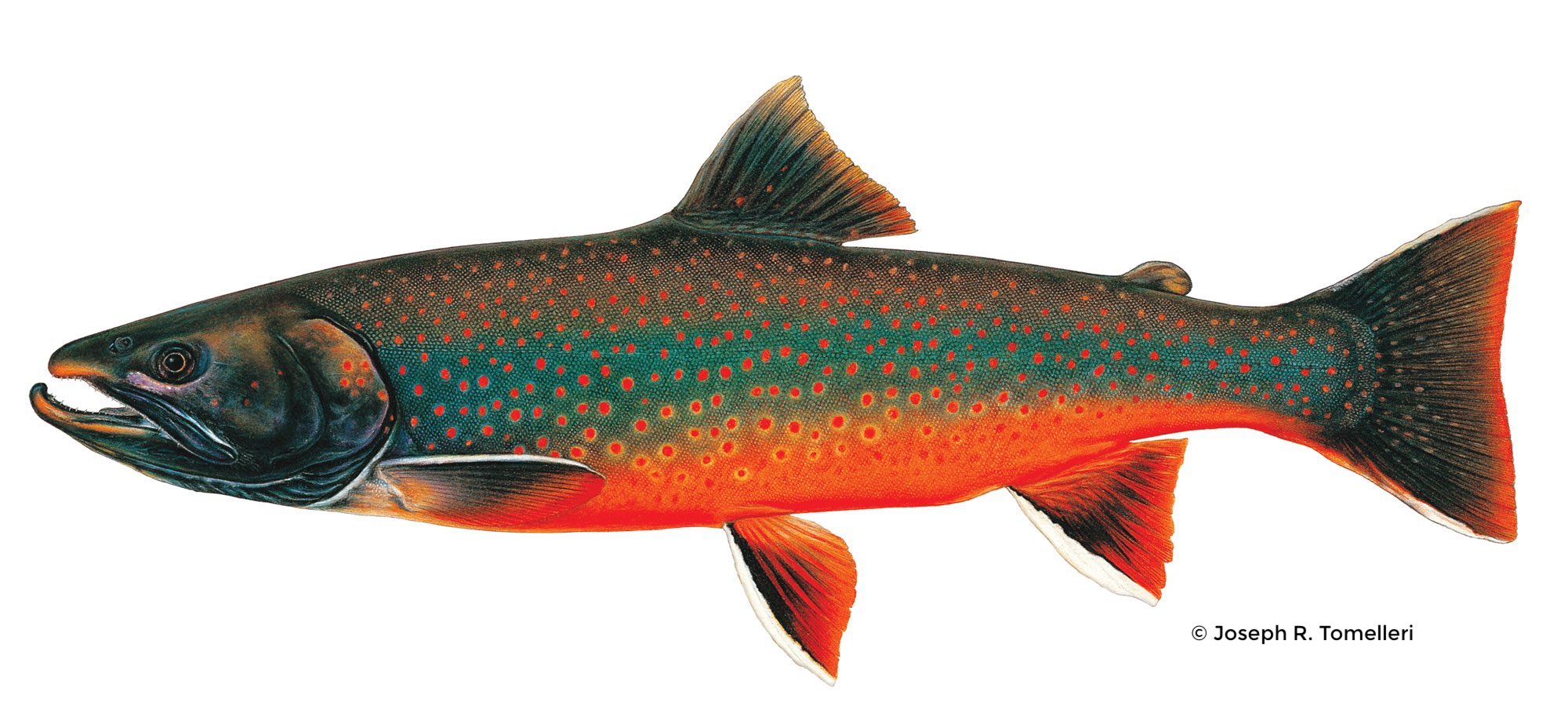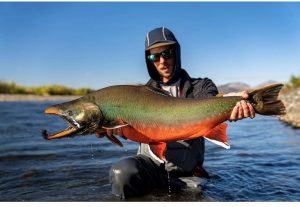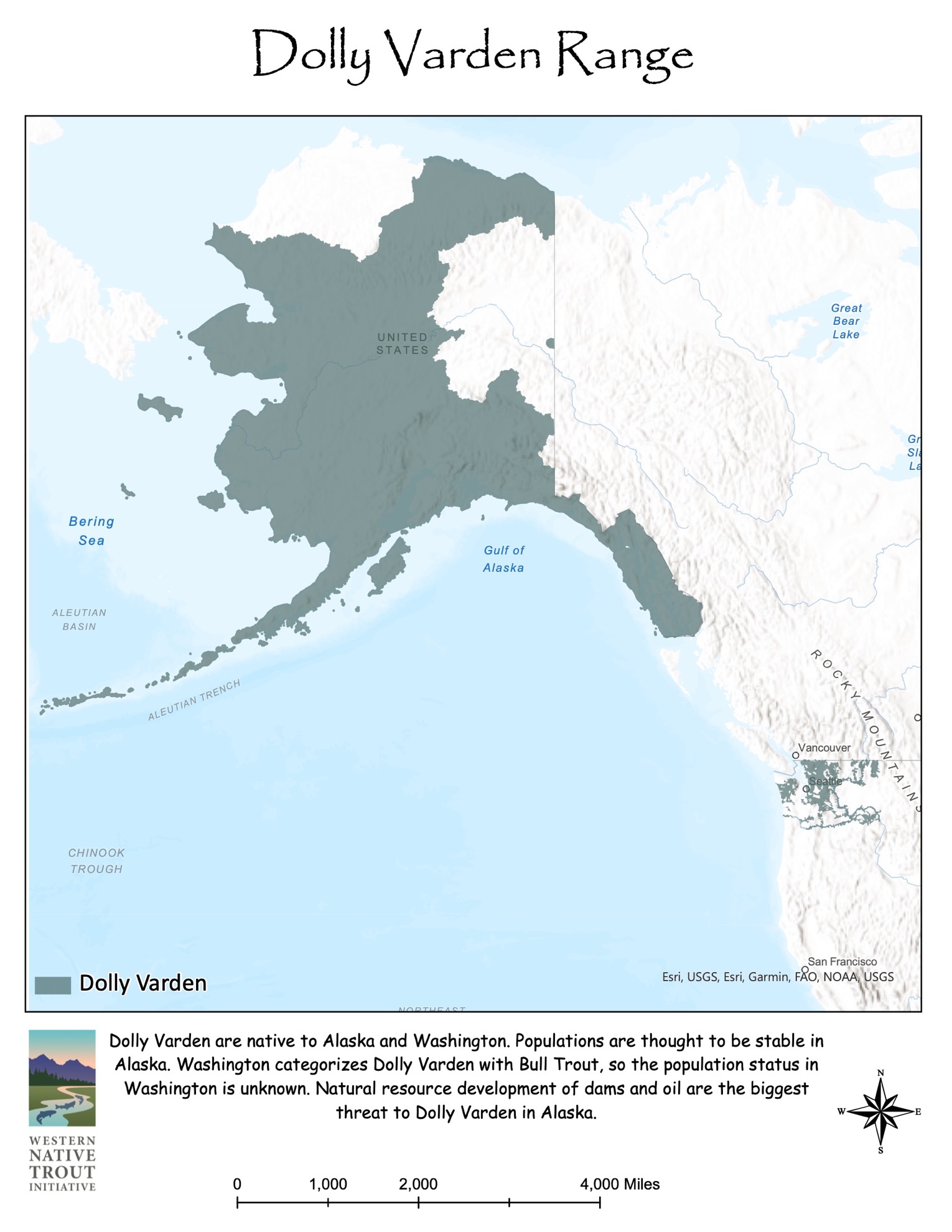
Dolly varden female

Dolly varden male
The Dolly Varden (Salvelinus malma) is native to cold-water tributaries of the Pacific Ocean in Asia and North America. It belongs to the genus Salvelinus, or true chars, which also includes the Brook, Lake and Bull Trout, as well as Arctic Char. Many populations are at least partially anadromous, but stream-resident and lacustrine (lake dwelling) populations occur throughout its range. Populations of Dolly Varden are generally thought to be stable throughout Alaska with some concerns about specific stocks, primarily around urban centers. Across most of their range, adults average 16-22 inches, but some populations in northern Alaska can produce fish over 36 inches and 20 pounds.

Dolly Varden are the most widely-distributed salmonid in Alaska. The range of Dolly Varden extends throughout the coastal areas of the state from Southeast Alaska across the Gulf of Alaska and the Bering Sea into the Chukchi and Beaufort seas to the Mackenzie River in northern Canada. Two forms or sub-species of Dolly Varden have been described in Alaska. The northern form (S. m. malma) is distributed from the Mackenzie River to the north side of the Alaska Peninsula while the southern form (S. m. lordi) is distributed on the south side of the Alaska Peninsula to the southern tip of Southeast Alaska, including Kodiak and the Aleutian Islands. Our understanding of the distribution of each form has changed in recent years with knowledge gained from genetic analysis. Both forms have anadromous and stream-resident forms; the lacustrine form is rare in the northern form but common in the southern form.
Resident Dolly Varden populations also occur in headwater streams in the Tanana Uplands, Ray Mountains, Ogilve Mountains, Alaska Range, Wrangell-St. Elias Range, and Brooks Range. Elsewhere, their range stretches along the Pacific coast of North America from Washington to the Arctic coast of Canada, and along the Pacific coast of Asia from Russia south to Japan and Korea.
Dolly Varden in Washington occur primarily in the Olympic Peninsula and Puget Sound drainages. However, within that range they coexist with Bull Trout in most places and often express multiple life histories as well. The majority of available distribution data for Washington is for the group, not necessarily one species or the other. Thus available range maps show distribution for both species combined. Ongoing eDNA sampling and genetics studies should provide a better understanding of Dolly Varden-specific distribution in the future.

Videos
- Watch a great videoof Dolly Varden swimming with Coho Salmon courtesy of the U.S. Fish and Wildlife Service Fisheries and Habitat office (Anchorage, Alaska).
- Read an interview by the U.S. Fish and Wildlife Service with fish biologist Randy Brown about Far North Slope Alaska Dolly Varden (February 2021).
- Listen to a U.S. Fish and Wildlife Service Fish of the Week podcast about Dolly Varden (February 2021).
